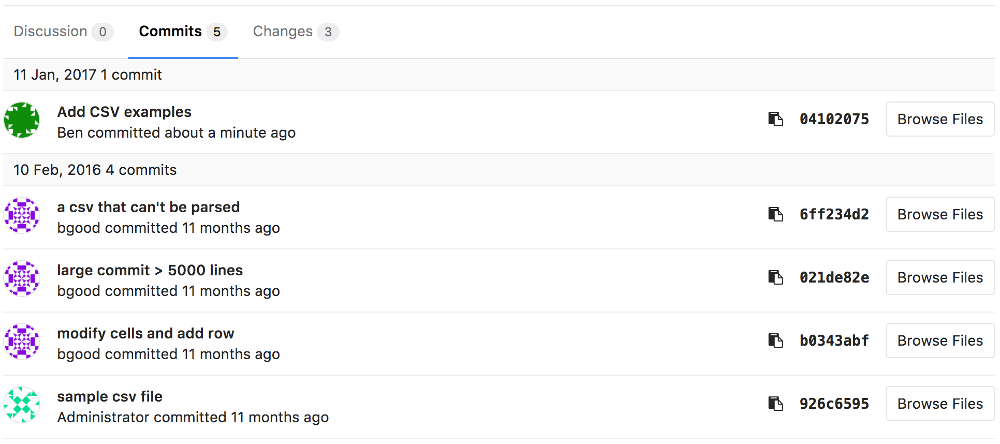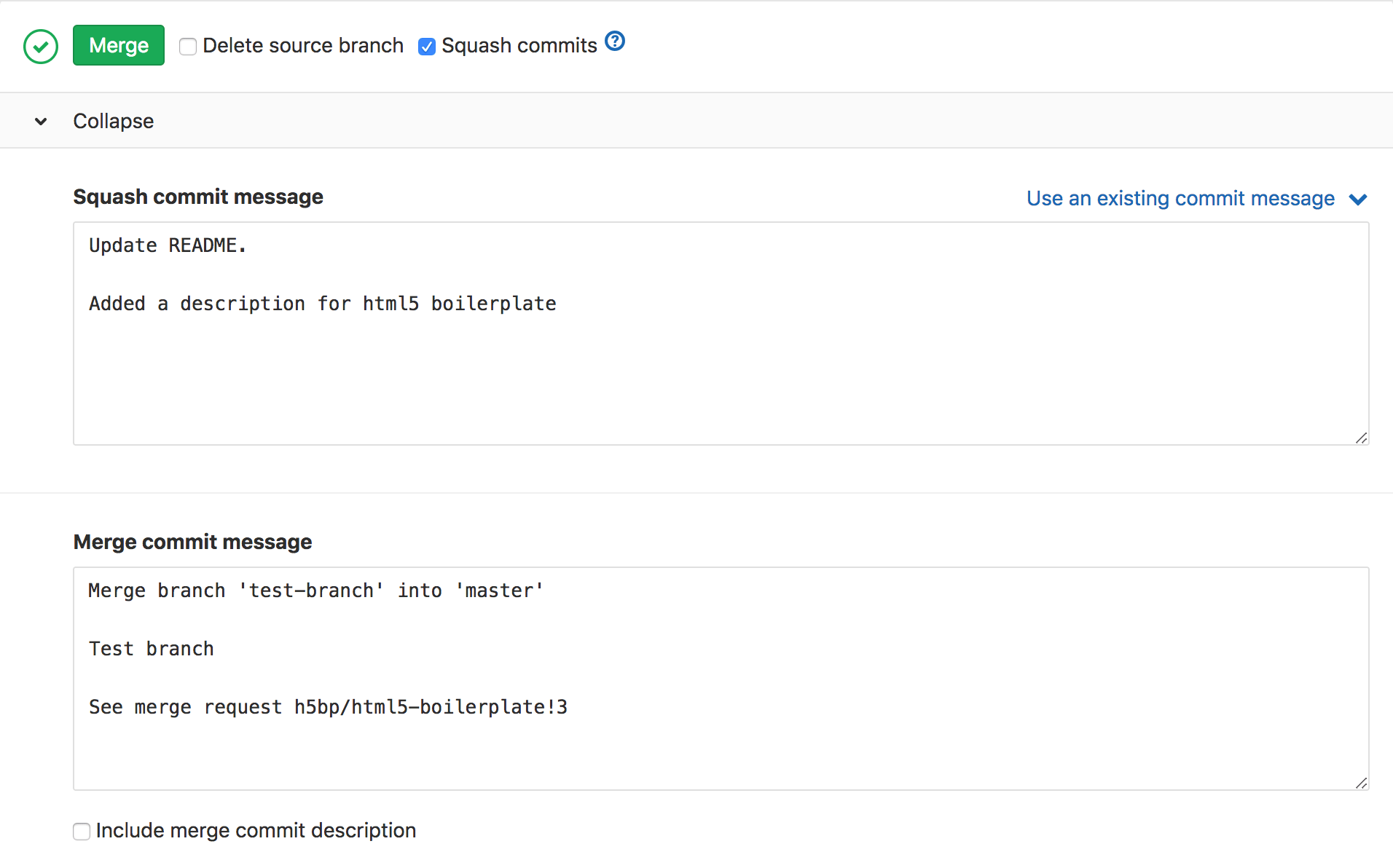6.6 KiB
| type |
|---|
| reference, concepts |
Squash and merge
- Introduced in GitLab Starter 8.17.
- Ported to GitLab Core 11.0.
With squash and merge you can combine all your merge request's commits into one and retain a clean history.
Overview
Squashing lets you tidy up the commit history of a branch when accepting a merge request. It applies all of the changes in the merge request as a single commit, and then merges that commit using the merge method set for the project.
In other words, squashing a merge request turns a long list of commits:
Into a single commit on merge:
The squashed commit's commit message will be either:
- Taken from the first multi-line commit message in the merge.
- The merge request's title if no multi-line commit message is found.
NOTE: Note: This only takes effect if there are at least 2 commits. As there is nothing to squash, the commit message does not change if there is only 1 commit.
It can be customized before merging a merge request.
NOTE: Note: The squashed commit in this example is followed by a merge commit, as the merge method for this example repository uses a merge commit.
Squashing also works with the fast-forward merge strategy, see squashing and fast-forward merge for more details.
Use cases
When working on a feature branch, you sometimes want to commit your current progress, but don't really care about the commit messages. Those 'work in progress commits' don't necessarily contain important information and as such you'd rather not include them in your target branch.
With squash and merge, when the merge request is ready to be merged, all you have to do is enable squashing before you press merge to join the commits in the merge request into a single commit.
This way, the history of your base branch remains clean with meaningful commit messages and:
- It's simpler to revert if necessary.
- The merged branch will retain the full commit history.
Enabling squash for a merge request
Anyone who can create or edit a merge request can choose for it to be squashed on the merge request form:
This can then be overridden at the time of accepting the merge request:
Commit metadata for squashed commits
The squashed commit has the following metadata:
- Message: the message of the squash commit, or a customized message.
- Author: the author of the merge request.
- Committer: the user who initiated the squash.
Squash and fast-forward merge
When a project has the fast-forward merge setting enabled, the merge request must be able to be fast-forwarded without squashing in order to squash it. This is because squashing is only available when accepting a merge request, so a merge request may need to be rebased before squashing, even though squashing can itself be considered equivalent to rebasing.
Squash Commits Options
- Introduced in GitLab 13.2.
- It's deployed behind a feature flag, disabled by default.
- It's disabled on GitLab.com.
- It's not recommended for production use.
- To use it in GitLab self-managed instances, ask a GitLab administrator to enable it. (CORE ONLY)
With Squash Commits Options you can configure the behavior of Squash and Merge for your project. To set it up, navigate to your project's Settings > General and expand Merge requests. You will find the following options to choose, which will affect existing and new merge requests submitted to your project:
- Do not allow: users cannot use Squash and Merge to squash all the commits immediately before merging. The checkbox to enable or disable it will be unchecked and hidden from the users.
- Allow: users will have the option to enable Squash and Merge on a merge request basis. The checkbox will be unchecked (disabled) by default, but and the user is allowed to enable it.
- Encourage: users will have the option to enable Squash and Merge on a merge request basis. The checkbox will be checked (enabled) by default to encourage its use, but the user is allowed to disable it.
- Require: Squash and Merge is enabled for all merge requests, so it will always be performed. The checkbox to enable or disable it will be checked and hidden from the users.
The Squash and Merge checkbox is displayed when you create a merge request and when you edit the description of an existing one, except when Squash Commit Options is set to Do not allow or Require.
NOTE: Note: If your project is set to Do not allow Squash and Merge, the users still have the option to squash commits locally through the command line and force-push to their remote branch before merging.
Enable or disable Squash Commit Options (CORE ONLY)
Squash Commit Options is under development and not ready for production use. It is deployed behind a feature flag that is disabled by default. GitLab administrators with access to the GitLab Rails console can enable it for your instance. Squash Commit Options can be enabled or disabled per-project.
To enable it:
# Instance-wide
Feature.enable(:squash_options)
# or by project
Feature.enable(:squash_options, Project.find(<project id>))
To disable it:
# Instance-wide
Feature.disable(:squash_options)
# or by project
Feature.disable(:squash_options, Project.find(<project id>))




